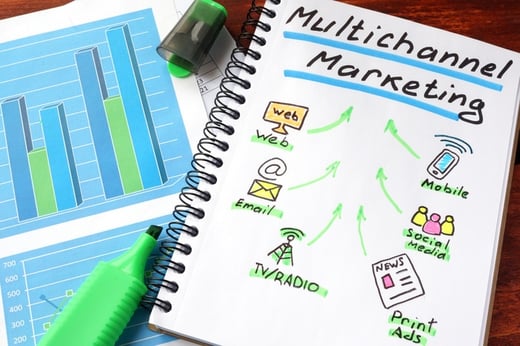 Putting all of your eggs in one basket can be a costly mistake for advertisers if you lack proper strategy and focus. For example, some might think all they need is traditional. Maybe radio or TV has worked before, so why complicate things by adding digital to the mix? But in reality adding digital could mean updating your website and making sure you’re following SEO best practices. On the other hand, younger marketers who gravitate primarily towards digital (it’s what they know!) are missing out on traditional opportunities.
Putting all of your eggs in one basket can be a costly mistake for advertisers if you lack proper strategy and focus. For example, some might think all they need is traditional. Maybe radio or TV has worked before, so why complicate things by adding digital to the mix? But in reality adding digital could mean updating your website and making sure you’re following SEO best practices. On the other hand, younger marketers who gravitate primarily towards digital (it’s what they know!) are missing out on traditional opportunities.
Today’s post will explore why marketers need both traditional and digital
Abandoning Traditional? Don’t Do It!
Digital marketing is programmatic, highly targetable, and can be cost-efficient. But a traditional channel like radio has a lot to offer. Per research from Nielsen, radio alone reaches 93% of American adults weekly, and Americans tend to listen five days per week — adding up to 188.6 billion minutes spent with the medium per week. If that’s not enough to convince you that traditional has a serious role to play, be sure to read one of our previous posts, where we discuss why a major CPG company, Proctor & Gamble, had to trim its digital media and build traditional back in.
Think You Don’t Need Digital? Think Again!
It can also be tempting for marketers to dismiss digital campaigns as the trendy option that can’t provide real substance. In terms of media, digital is an umbrella that includes all kinds of marketing, from content marketing and SEO to display advertising and paid social. Each has their own unique benefits and drawbacks, but the ease and sometimes inexpensive cost with which a company can start a digital campaign is extremely attractive. However, it’s also easy to mis-spend your budget when choosing digital options, so you do need to take care to leverage it effectively.
Utilize Cross-Channel Integration for Best Results
The truth is, today’s consumers live in an integrated world where both digital and traditional play a role in their decisions. What’s more, the path to purchase has seriously fragmented over the last decade. It’s not a matter of choosing between digital and traditional outlets when you’re developing your budget — it’s a matter of choosing the right elements of each and deploying them strategically to amplify each other. By abandoning or ignoring one or the other entirely, you’re actually limiting your potential results and thus diminishing the ROI of your campaign.
Remember, both traditional and digital formats have distinct purposes and allow your brand to reach your audience across different touch points along the consumer journey. Integrating the two, such as leveraging radio with digital promotions, can ultimately yield the most powerful results.

